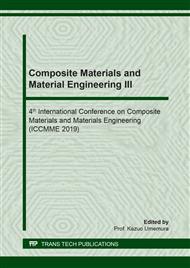p.331
p.337
p.345
p.351
p.357
p.365
p.371
p.377
p.385
Thermal Efficiency of Domestic Cooking-Gas Burner Using Open-Cellular Porous Media in the Case of Varied Outlet Diameter of Mixing Tube
Abstract:
The domestic cooking-gas burner consumed the highest amount of Liquefied Petroleum Gas (LPG) not over 5.78 kW ( 280 mmH2O) based on Thailand Industrial Standard (TIS 2312-2549) is modified by using the open-cellular porous media. The Nickel-Chrome (Ni-Cr) with pores per inch (PPI) of 8.5 and porosity (ε) of 0.92 is selected as porous media. To investigate the performance of a new cooking-gas porous burner, three outlet diameters of mixing tube (Dout) between primary air and LPG, i.e., 27, 35 and 43 mm., are examined. The temperatures at bottom vessel (TV) and water (TW) are monitored. The exhaust gas (CO and NOX) is also observed. Thermal efficiency (η) of three modified burners are estimated in accordance with TIS 2312-2549. From the experiment, the TV is increased with Dout leading to the boiling time (t) of TW for reaching to about 99°C (depend on TIS 2312-2549) in the case of Dout = 43 mm gives the fastest. The CO and NOX of all burners are not difference and are in relative low level: CO is in the range of 140 to 180 ppm and NOX is not over 70 ppm. The ηth is raised with increasing Dout in which yield as 47.53, 52.86 and 54.77% for Dout of 27, 35 and 43 mm., respectively.
Info:
Periodical:
Pages:
357-362
Citation:
Online since:
May 2019
Authors:
Price:
Сopyright:
© 2019 Trans Tech Publications Ltd. All Rights Reserved
Share:
Citation:


